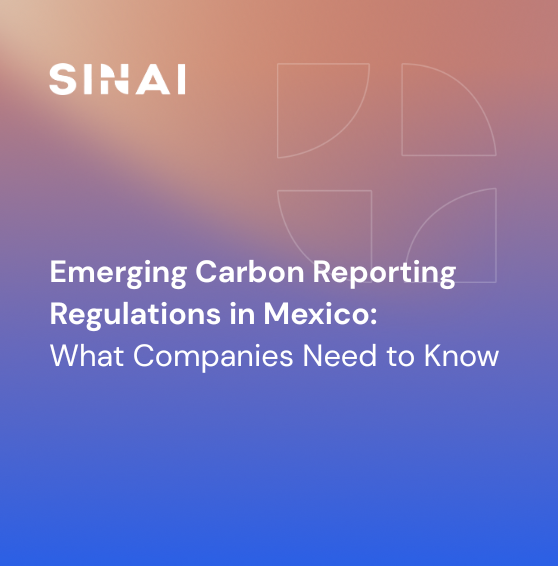
Managing CO2 Emissions in the Chemical Industry
The chemical industry plays a crucial factor in life as we know it today. However, its foundations are built, in part, on abundant fossil energy and hydrocarbon feedstocks. This has created an industry with a significant carbon footprint that continues to grow alongside demand. As the chemical industry seeks to address climate change in line with science-based guidelines and targets, world-class engineered solutions and decarbonization strategies are required. The need to create a more sustainable global chemical sector is now imperative.
According to data from Deloitte, the chemical industry emits more than two gigatons of greenhouse gases per year on a global scale. The US chemical industry’s CO2 footprint is over 200 million metric tons of carbon dioxide equivalent per annum. Plus, the industry’s continuous international growth poses yet another challenge to the question of managing CO2 emissions in the chemical industry.
Chemical and material producers need to address these growing emissions. They can do this by accelerating low-carbon innovation strategies, adopting new technologies, and working across value chains to deliver lower-carbon solutions and products.
Current CO2 Emissions in the Chemical Industry
The chemical industry is by far the largest industrial consumer of gas and oil. It’s also the third-largest industry sub-sector producer of direct CO2 emissions, closely following the steel, cement, and iron sectors. Roughly half of the chemical industry’s energy input is used as feedstock, the GHG emissions of which are produced in many other sectors.
Direct CO2 emissions resulting from primary chemical production activities amounted to 920 Mt CO2 in 2022. While this represents a 2.3% decrease over 2019’s emissions, according to the Net Zero Emissions by 2050 Scenario, primary chemical production emissions will peak over the coming few years. They’ll then decrease to around 10% below 2020’s levels by the year 2030, rising demand notwithstanding.
A Deloitte analysis also notes that the chemical industry’s projected growth would lead to a doubling of the sector’s GHG emissions over the next 30 years if abatement solutions are not implemented.
Chemical output in the US is expected to enjoy its strongest year in over a decade in 2022, with growth displayed across all sub-sectors. American Chemistry expects chemical output to rise by 4.1% in 2022 and a further 2.4% in 2023, while shipments are expected to grow by 9.6% in 2022 and 3.4% in 2023. Basic chemicals will experience a growth rate of 4.3% in 2022. The largest increases will be seen in organics, plastic resins, inorganic chemicals, and bulk petrochemicals. Specialty chemicals are also expected to grow by 6.2% in 2022 due to strong demand. While capital spending in the US will rise by 12.3% to $34.5 billion in the same year.
Demand for plastics is also rising rapidly and will continue to grow in the foreseeable future. Large plastic end-use sectors like the construction, automotive and packaging sectors are driving this demand. In certain developing regions, demand for plastics is expected to gain momentum considerably. This demand for plastics leads to demand for many high-value chemicals from which these plastics are manufactured. This chemical demand grew at an average rate of 3.5% per annum between 2015 and 2019.
Demand for methanol is currently the fastest-growing for any primary chemical, despite demand dropping by 7% in 2020 due to the Covid-19 pandemic. Between 2015 and 2019, the production of methanol grew by an average of 7% per annum.
Methanol is widely used in the production of formaldehyde, which in turn is used to produce a range of specialized coating mediums and plastics. It’s also used for fuel production and as an ingredient in the production of high-value chemicals, particularly when the availability of oil for feedstock is low. IEA projections to 2025 show that methanol production capacity will expand in the Asia-Pacific area in particular, thanks to the widespread availability of cost-effective feedstock.
How Can the Chemical Industry Manage CO2 Emissions?
There are several ways in which the chemical industry and its manufacturers can manage CO2 emissions. These include:
The development of a GHG inventory

Greenhouse gas inventories can serve as accurate baselines. These baselines can be used to track increases and decreases in further emissions. This data can then help to create robust decarbonization strategies based on true emissions metrics.
The development of an internal carbon price

Internal carbon pricing tools enable organizations to build financial models into climate scenarios, track performance against key emissions targets, and align operational strategy with segmented targets built on emission pathways. Defining an internal carbon price helps chemical industry members to quantify emissions gaps, targets and carbon budgets, and implement pricing mechanisms based on optimal business approaches.
Working with supply chains
Addressing Scope 1 and 2 emissions alone may not be enough to decarbonize the chemical industry and enact sustainability on organizational and global scales. Tackling Scope 3 emissions from value chains is the key to understanding the impact and making data-driven decisions to allocate capital appropriately.
Embrace New Technologies
The path to net zero in the chemical industry will rely on new technology and solutions that can accurately assess and measure carbon emissions and craft actionable strategies for their reduction. Managing CO2 emissions in the chemical industry is being simplified each year by the development of new tools and automation platforms that can provide exactly these services and functions.
Decarbonization platforms like SINAI provide a range of carbon accounting, net zero target creation, reporting, and value chain management tools. This enables businesses across industries, including the chemical sector, to engage their value chains and identify key opportunities for decarbonization goals.
Decarbonizing the Chemical Industry
Managing CO2 emissions in the chemical industry shouldn't be seen as a challenge but as an opportunity. While this sector is one of the highest global emitters of greenhouse gases, organizations can use science-based targets, automated tools, and intelligent strategies to reduce their emissions and meet key targets. All while still maintaining the high level of future growth projected for this essential industry.
SINAI can help your chemical industry organization to set emission goals and establish and implement decarbonization strategies. Contact us and request a demo to discover how our first class enterprise software can measure, analyze, price and reduce emissions to help you reach your net zero targets.











